COLLABORATION
A DECADE IN REVIEW — WHERE WILL YOUR NEXT MEAL COME FROM?
COMMUNITY ECONOMIES THE SHOREFAST INITIATIVE
LEAVING A LEGACY WORKING WITH PROFESSIONAL ADVISORS

COLLABORATION
A DECADE IN REVIEW — WHERE WILL YOUR NEXT MEAL COME FROM?
COMMUNITY ECONOMIES THE SHOREFAST INITIATIVE
LEAVING A LEGACY WORKING WITH PROFESSIONAL ADVISORS
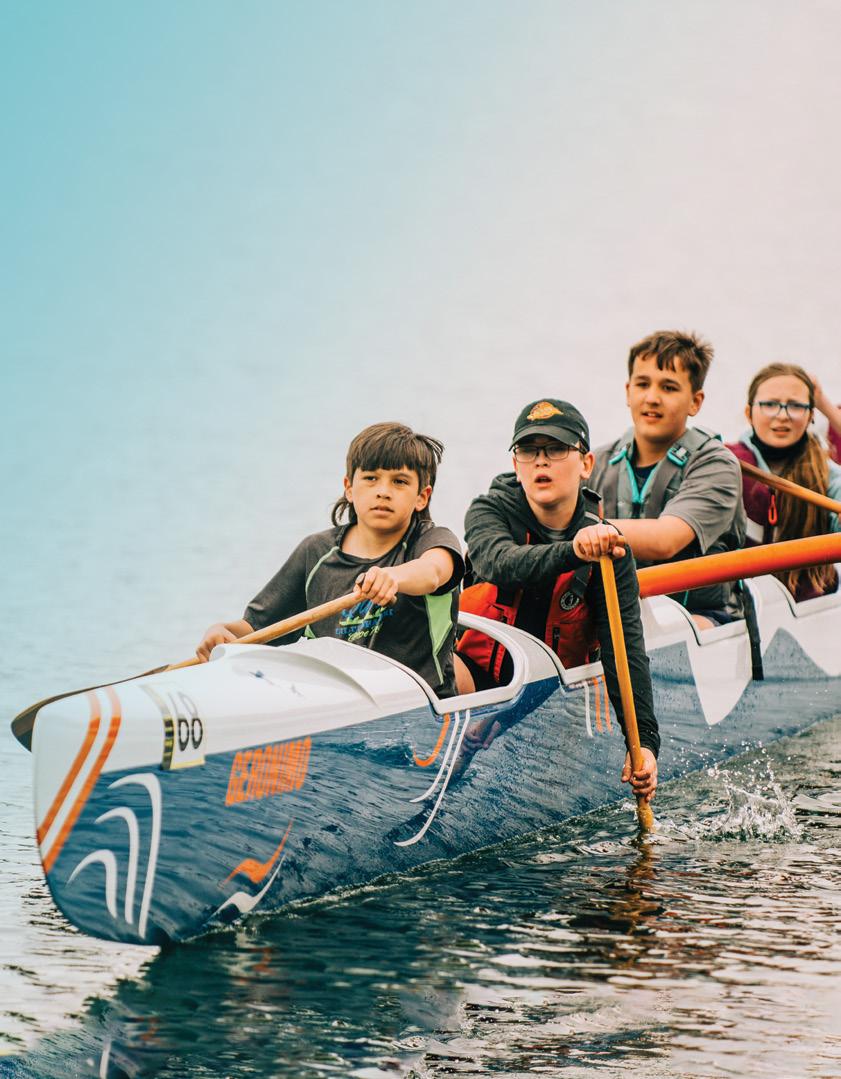
Bayside Middle School
Creating Connection


In 2013, the Victoria Foundation launched Pulse magazine to share stories of our remarkable community and feature the incredible work of individuals and organizations committed to improving it. The Foundation staff wanted to highlight the many important initiatives in our city and how they reflect our collective well-being, health, and overall vitality as a place to live, work, and play. In the last decade, Pulse has been a place to celebrate our collective successes. As we look to our future, it is more important than ever to reflect on how far we have come.
We invite you to take a trip down memory lane in this issue. Read highlights from years past, and learn about the power of community economies in our feature story, where we examine the Shorefast Initiative pilot project led by Zita Cobb from Fogo Island in partnership with the South Island Prosperity Partnership. Other stories will tell you about a transformational gift to supportive housing for women and youth and how students at a local middle school are learning to paddle canoes and connect with Indigenous culture.
We hope you enjoy reading this packed 2023 edition of Pulse, and we look forward to sharing even more inspirational stories from our vibrant, caring community – here, on our website, and on social media.
With an estimated 17,240 people who identify as Aboriginal, Greater Victoria is home to a rich diversity of Indigenous peoples and cultures. We would like to acknowledge that the Victoria Foundation’s office is located on the traditional territory of the Lekwungen people, as represented by the Esquimalt and Songhees Nations.
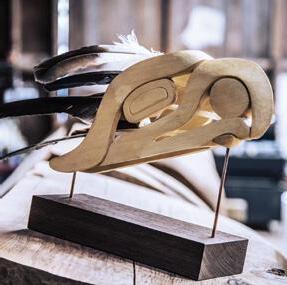 Rajiv Gandhi Victoria Foundation Board Chair
Sandra Richardson Victoria Foundation CEO
Rajiv Gandhi Victoria Foundation Board Chair
Sandra Richardson Victoria Foundation CEO
FEATURES
4 80 YEARS OF COMMUNITY BUILDING
A soup kitchen, a vision and $20
DEPARTMENTS
7 Givi ng Tuesday
8 Vital Youth
20 THE LORAN SCHOL ARSHIP FOUNDATION
Investing in future potential
24 SUPPORT ACROSS THE SPECTRUM
Online FASD resource
10 Vital Loans
12 Grant Spotlight
23 Milestones
26 Philanthropic Ser vices
34 Rando m Acts of Kindness
At the Victoria Foundation, we believe in connecting people who care with causes that matter ®
VICTORIA FOUNDATION
#200-703 Broughton Street, Victoria British Columbia, V8W 1E2 Tel 250.381.5532 Fax 250.480.1129

info@victoriafoundation.bc.ca
victoriafoundation.ca
#200-703 Broughton Street, Victoria British Columbia, V8W 1E2 Tel 250.381.5532 Fax 250.480.1129 info@victoriafoundation.bc.ca victoriafoundation.ca
Charitable BN 13065 0898 RR0001
Charitable BN 13065 0898 RR0001
of Pulse takes a look at these connections through the eyes of some of the region’s oldest
the Foundation’s vision to build a vibrant, caring community for all.
BOARD OF DIRECTORS
Patrick Kelly, Chair Kyman Chan, Treasurer
Rajiv Gandhi, Board Chair
Rasool Rayani, Past Chair
Lori Elder, Vice-Chair
James Darke, Karen DeMeo, Mia Maki
Karen Cameron, Treasurer
Mar y Mouat, Carey Newman, Ian Wong
Zaman Velji, Past Board Chair
Grace Wong Sneddon, Deirdre Roberts, Honorar y Governors President
Brad Clark, Michael Cridge, Rob Gareau, Wency Lum, Tamara Napoleon, Marilyn Sing, and John van Cuylenborg
Since 1936, these relationships have resulted in grants totalling more than $163 million to charitable organizations and scholarship recipients in our region and beyond And with current assets under management at an alltime high of over $270 million, the Foundation is poised to continue granting well beyond the next 80 years
PULSE MAGAZINE is published by
Patrick Kelly – Indigenous Cultural Advisor
Dr. Grace Wong Sneddon – Honorary Governors President
580 Ardersier Road, Victoria British Columbia, V8Z 1C7 Tel 250.595.7243
As the region’s largest non-government funding organization, we ’ re proud to be able to support an amazing breadth of issues and causes. Within the pages of this issue, you can read about the remarkable work of a number of recent grant recipients, including the Aboriginal Coalition to End Homelessness, the Victoria Community Food Hub Society, the Raincoast Conservation Foundation and more
Most photos by Derek Ford, unless otherwise stated.
info@pageonepublishing.ca pageonepublishing.ca
Cover photo: Bayside Middle School
Loans, to inspirational donors and the professional advisors who help bring their philanthropic dreams into reality
I hope the stories and articles on the following pages will be both informative and inspirational, perhaps motivating you to begin or strengthen your own involvement in this community, connecting with causes that matter most to you
OUR VISION: A VIBRANT, CARING COMMUNITY FOR ALL
Established in 1936, the Victoria Foundation is Canada’s second-oldest community foundation and sixth largest of over 200 nationwide. We manage charitable gifts from donors whose generosity allows us to create permanent, income-earning funds. The proceeds from these funds are then distributed as grants for charitable or educational purposes. To date, the Victoria Foundation has invested more than $313 million in people, projects, and non-profit organizations that strengthen communities in BC and throughout Canada.
AT BAYSIDE MIDDLE SCHOOL IN BRENTWOOD BAY, THEY’VE FOUND A UNIQUE WAY TO BRING COMMUNITY TOGETHER WHILE WORKING TOWARDS TRUTH AND RECONCILIATION: PADDLING WAR CANOES IN THE BAYSIDE CANOE CLUB.
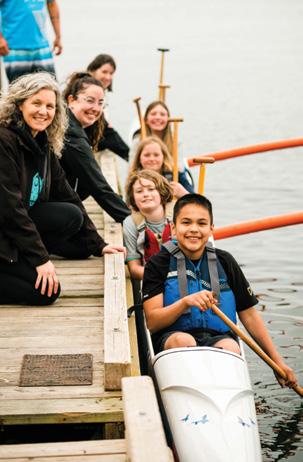
“We noticed a lack of Indigenous students joining sports teams, so we asked them to write a letter to share what they’re proud of in their culture and community,” explained Kim Graves, vice principal of Bayside Middle School. “Many wrote about paddling war canoes and how it makes them proud of who they are and where they come from. That’s when we realized we were trying to fit these students into what we believed to be the right athletic opportunity for them instead of opening ourselves up to create different opportunities.”
With this information in hand, Graves and the team realized the importance of providing students with the opportunity to get on the water and paddle canoes. The initial challenge for the program was funding, but when Graves connected with the Victoria Foundation at an event, she learned that

grants were available. With help from Landon Underwood, a member of the Indigenous team, and the school’s Indigenous Education principal, Melissa Austin, they received a grant from the Foundation to develop their idea for an Indigenous-led, community-run, canoe-pulling program for Indigenous and non-Indigenous students.
The recent Vital Signs citizen survey showed that 95% of Victorians accept people from different cultural backgrounds, and 84% stated the importance of fostering, learning about, and respecting Indigenous culture, values, and traditions. The region earned a B- for diversity, equity, and inclusion.
The Canoe Club highlights the WSÁNEĆ practices associated with canoe pulling and teamwork while supporting and improving the mental health of students by engaging in traditional wellness practices. The initial expectations were that maybe 20 students would sign up, but nearly 60 children showed up on the first day, and almost all stayed for the duration of the program.
Len Morris Jr., a Master Carver and traditional knowledge keeper, provided support, guidance, and teaching for the students, as well as the use of his family’s canoes. “Seeing the togetherness of the children was rewarding,” he said. “Everyone wants to win, but you have to work together as a team to get there. These are learnings my grandparents handed down to us: everyone has to pull together on the crucial work.”
“The children were excited to pull a canoe because, for many, this was their first time in a war canoe,” said Graves. “They enjoy the connection to the water, to the land, and to the good feelings and medicines that come from the activities and culture, bringing them joy, peace, and healing.”
While First Nations students’ feedback inspired the program, there was a diverse group of students that chose to participate and enjoy the opportunity to learn from and with other cultures.

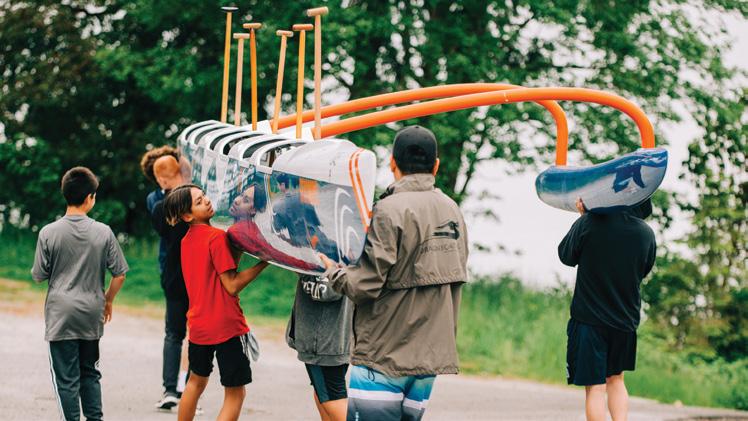
“Another benefit was the opportunity to meet with parents who may not have been comfortable coming to the school due to historical trauma within the education system,” said Graves. “We created connections and pathways from the school to the community and from the community to the school by engaging with parents — opening our doors and putting our feet into the community while standing together on the shore, vulnerable, available, and accessible in a neutral space as the children learned to pull together.”
The next steps for Bayside are to continue to grow their funding for honorariums for the Knowledge Keepers and find a place to store the canoes. “Our ultimate goal is to build a space for local artists. We’d like to build a canoe shed with a carving space to bring local artists who don’t have access to facilities,” said Graves. “Our kids can participate, connecting with the carving and the canoes and bringing some of that togetherness back here.”
This really started to build a community and a connection that we otherwise wouldn’t have been able to do in a traditional school setting.
— Kim Graves, vice principal, Bayside Middle School
The Victoria Foundation is pleased to have an online data hub called Vital Victoria. Vital Victoria has over 70+ indicators on the quality of life in Greater Victoria.

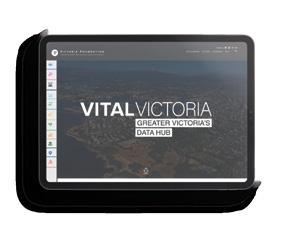

it out today to find out more at VictoriaFoundation.bc.ca/vital-victoria
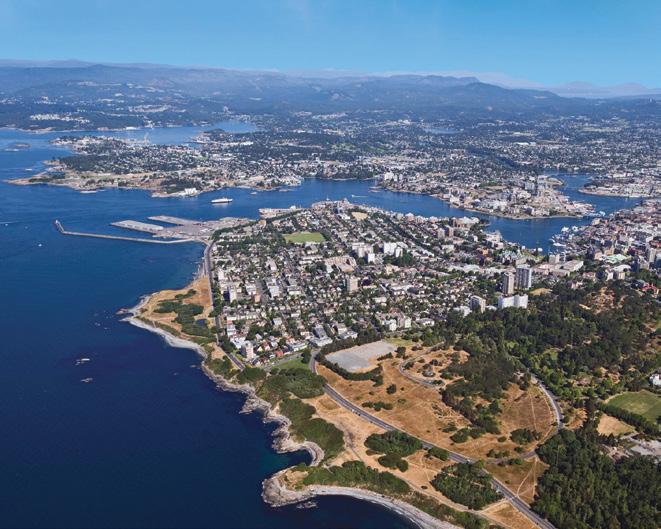


For the past decade we have shared the heartfelt stories of our community, highlighting the organizations and people who are working hard to improve life in Greater Victoria. Looking back over the years, it’s gratifying to see the progress we have made together and the impact of investing in people, opportunities, and solutions. You can read previous issues at victoriafoundation.bc.ca/publications or by clicking on the covers below.
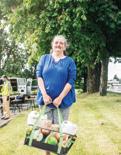
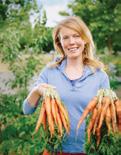
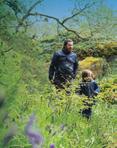
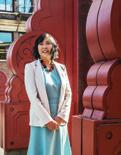
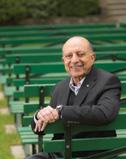



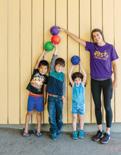

THE 2013 VICTORIA’S VITAL SIGNS REPORT ASKED A KEY QUESTION: “DO YOU KNOW WHERE YOUR NEXT MEAL IS COMING FROM?” THE RESULTS SPURRED A DECADE OF FOCUS ON FOOD SECURITY FOR THE VICTORIA FOUNDATION TO BUILD A FOOD-SECURE REGION WITH LESS RELIANCE ON EMERGENCY SUPPORT, AND A STRONG LOCAL FOOD ECONOMY. TEN YEARS LATER, THE FOUNDATION IS TAKING STOCK OF SUCCESSES, LEARNINGS, AND LOOKING AT WHAT COMES NEXT.
While the Vital Signs report was a first step for the Foundation, there was a need to paint a picture of what was happening locally. Consultant Keith Jones of Victoria Integral Strategy Practice, offered to address a wicked problem in the region using their road-mapping methodology. Jones led a mapping exercise to review what was working in the region and identify areas for increased collaboration. The process brought together two dozen funders and community stakeholders to develop a shared vision for a sustainable regional food system. This collective vision guided the direction of the Foundation, aligning funding priorities to address key gaps in support, including collaboration and infrastructure. “We convened local funders to examine where funding was going in the food system,” said Carol Hall, Victoria Foundation’s Director of Strategic Initiatives. “Great projects, like community gardens and meal programs, were being supported, but infrastructure and processing equipment were missing. Without these components, we would be unable to transform the system, forever stuck on a treadmill of keeping people fed while watching the lines for food banks get longer instead of solving the underlying issues.”
Working alongside community partners, the Foundation’s long-term commitment and partnerships contributed to innovative solutions like the centralized Food Security Distribution Centre warehouse, operated by the Mustard Seed Street Church with dozens of partners, including the Capital Region Food and Agriculture Initiatives Roundtable (CRFAIR). The Centre provides space to support initiatives like the Food Rescue Project, South Island FarmHub and more.
In 2014, the food systems road map provided a new understanding of the complexity and interconnectedness of our regional food system.
2015
In 2015, the Food Share Network formed and started to coordinate the distribution of healthy food to 45 community groups.
2017
Space is secured for the Capital Region Food Security Distribution Centre to be operated by the Mustard Seed.
2019
In 2019, the Food Security Distribution Centre warehouse was purchased.
2020
In 2020, the South Island FarmHub launched by CRFAIR to purchase local, organic food from farms and processors and redistribute back into our community.
2022
The Province of BC announces funding for the Kitchen Connect program.
Having the road map and the vision as a guide, the next step was taking action. In 2017, with support from the Victoria Foundation, the Mustard Seed Street Church leased a 22,000 sq. ft. warehouse space in Esquimalt as a regional Food Security Distribution Centre. This space was critical to support the Food Share Network to launch the Food Rescue Project, recovering fresh food from grocery stores and redistributing it to local agencies serving individuals and families in need.
Treska Watson, Director of Operations at the Mustard Seed, shared, “We started with 11 Thrifty Foods stores, rescuing about 4,000 pounds of food per day, and we have tripled in size and grown in every way possible. Today, we have 32 grocery partners helping us rescue between eight and 12,000 pounds of food daily. Our commercial kitchen allows us to turn many rescued foods into sauces, soups, stocks, and smoothies while reducing waste output.”
In 2019, with funding from the Province of BC, Vancity, and Victoria Foundation, the Mustard Seed purchased the warehouse.
Not only has the Centre become a permanent community asset, it continues to evolve to meet community needs and opportunities with cold and dry storage, food processing kitchens and more. The next phase of development will include a Skills Training Centre with training spaces, boardrooms, meeting rooms, and dedicated office space for other non-profits doing food security work in the region.
Another idea from the road map matured during the pandemic: with restaurants closed, local farmers had crops in the ground but no markets to sell directly to consumers. With funding from the Rapid Relief Fund, CRFAIR launched the South Island FarmHub to purchase local, organic food from farmers and processors and redistribute it to the community. Today, the FarmHub’s online market offers local, organic produce and processed goods from over 30 farmers and 25 food processors.
Food banks are still important emergency supports in our community with higher-than-ever demand. However, the Food Security Distribution Centre and partnerships are moving us closer to building a food-secure region.

In recent years, the Foundation has started to take a deeper look at the challenges of food equity. This includes working with equity-led groups to support the community’s vision.
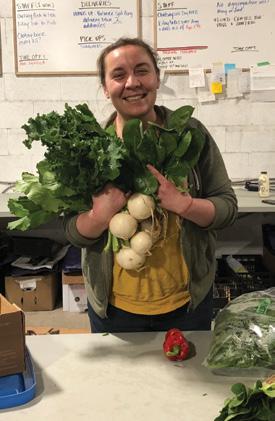
In 2020, Iyé Creative conducted a survey of their participant base of racialized communities and people facing barriers to access locally grown food. 24% self-identified as being food insecure and 44% were facing significant barriers in accessing fresh produce and food. These preliminary findings revealed structural issues facing many equity-deserving groups. Access to culturally appropriate food continues to be a challenge for many communities within Greater Victoria, and the Victoria Foundation is focusing on methods to support traditionally underfunded communities.
Creating a food-secure region doesn’t happen overnight or even in a couple of years. It takes time, commitment, and funding. While there is cause for celebration, there is still a path ahead to achieve the vision as put forth in the road map. Find out more at Victoriafoundation.bc.ca.
IN 2021, THE VICTORIA FOUNDATION PARTNERED WITH THE SOUTH ISLAND PROSPERITY PARTNERSHIP (SIPP) AS PART OF THE SHOREFAST COMMUNITY ECONOMIES PILOT, A MULTI-COMMUNITY, NATIONWIDE PROJECT FOCUSED ON UNLEASHING THE POWER OF PLACE TO HELP LOCAL COMMUNITIES THRIVE.
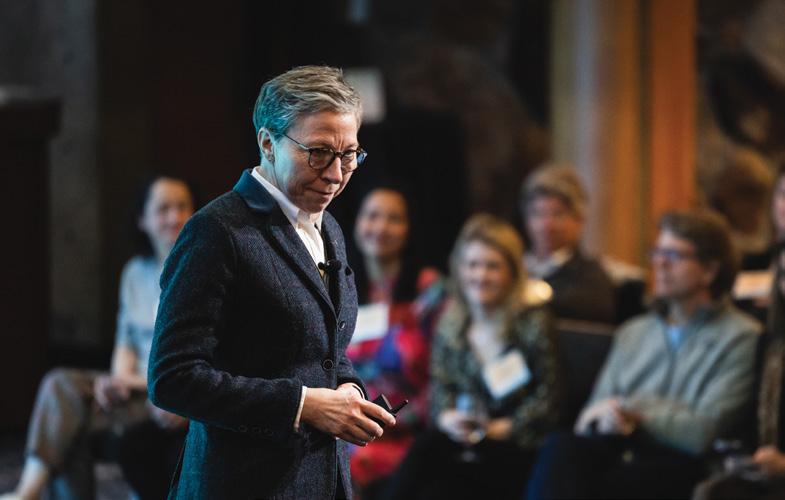
Shorefast’s origin story begins on Fogo Island, a remote community off the coast of Newfoundland and Labrador. The community gained international recognition by developing a community-based tourism model that promotes economic sustainability while strengthening the island’s natural and cultural resources. Zita Cobb, Shorefast’s Founder and CEO and the first social entrepreneur to be inducted into the Canadian Business Hall of Fame, initiated the Shorefast Community Economies Pilot to help strengthen other communities.
“Central to our approach,” explained Cobb, “was the 2019 book The Third Pillar by economist Raghuram Rajan. Rajan makes the case that the three pillars that support
society are government, markets, and community, and that they are out of balance. Specifically, he argues that the community pillar has been neglected and weakened. He posits that until we see community as an integral part of resilience, the economic system will continue to fail us.”
with Prince Edward County, Hamilton, and London, Ontario. The five communities discussed their experiences, successes, and challenges to help them learn to build and strengthen a community economy through place-based economic development best practices.
Emilie de Rosenroll, Founding CEO of SIPP, shared, “The project was a bottom-up approach to learning how community economies are organized, the challenges they share, and the common ways of collectively creating action to overcome barriers and rise to meet opportunities.”
For over a year, Fogo Island was connected to Victoria through the Victoria Foundation and SIPP, participating in the pilot project
Launched during the pandemic, the cohort quickly found opportunities to leverage their learnings from the pilot project.
When the economy in a local community doesn’t work, the community is undermined in its ability to provide a place to live with dignity.
— Zita Cobb, social entrepreneurPhoto: Shorefast Shorefast Founder & CEO, Zita Cobb
“Within a couple of weeks of the pandemic,” explained de Rosenroll, “we put together the Rising Economy Task Force with 120 stakeholders across all of the driving sectors of our economy. We had ocean and marine, the Indigenous economy, the inclusive economy, retail, restaurants, transportation, and tourism — and more — and we asked those committees to reach out within their sectors to find out how we can move quickly to build resilience. They responded with 160 recommendations.”
The task force created an impact criteria to select the top initiatives: they had to have the most broad impact regionally, they had to be the most inclusive of all population segments, and they had to be reasonably undertaken within 18 months. The Indigenous Prosperity Centre was one of the projects that met the criteria and was selected for development.
SIPP has been committed to their Indigenous partners and their self-directed economic development, but the pandemic significantly changed the dynamic, leading to the creation of the Indigenous Prosperity Centre (IPC). The Centre promotes Indigenous-led

prosperity tactics, innovation, and meaningful partnerships based on a values-driven approach to attaining shared community economic prosperity. The Centre will also support collaboration around shared economic priorities of the 10 South Island Nations, and have a strong initial focus on the ocean and marine industries where conservation meets economic development.
49% of Vital Signs citizen survey respondents believe Black, Indigenous, and People of Colour have opportunities to be equal participants in the community. Economy was given a C+ in the 2022 Vital Signs citizen survey. victoriafoundation.bc.ca/vital-signs
The Shorefast Pilot focused on learning and supporting the development of the IPC with funding from the Victoria Foundation and Shorefast Foundation. Shorefast plans to leverage the learnings from the IPC to share with a broader audience across the country in future iterations of the Community Economies program.
SIPP has earned global recognition for their work supporting the local economy, receiving two gold and one silver Excellence in Economic Development awards in 2021 from the International Economic Development Council.
The Balance of Trade Community cannot thrive in a vacuum. Local companies need exports to bring new dollars into the local economy to create the ripples required to avoid stagnation. But to be sustainable, local communities need to be engaged and have the structures, knowledge, capital, and skills to develop place-based economies that leverage the strengths of the community. As well, looking at the quality of economic growth, not just the quantity, ensures a good balance of civic institutions, municipal governments, and local businesses working together to create a space to live with dignity.
“The local economy,” finished Cobb, “is the underpinning of the very thing that is the building block of society, which is place-based communities.”
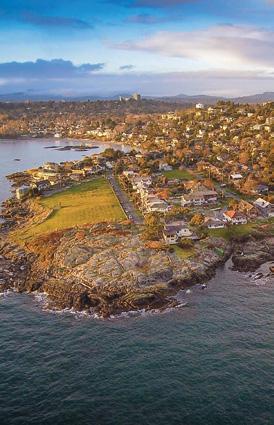
THROUGH THE GENEROSITY OF PHILANTHROPISTS CLINT AND CAROLE FORSTER, TWO LOCAL ORGANIZATIONS HAVE RECEIVED SIGNIFICANT CONTRIBUTIONS TO HELP PEOPLE AT RISK OF HOMELESSNESS IN VICTORIA FIND A SPACE TO LIVE THEIR BEST POSSIBLE LIVES.

The Forsters prefer to fund projects already in motion: helping people who are helping themselves. In both cases, the organizations had a strategy to create needed spaces, and the additional support from the Forsters enabled them to refocus their plans to create possibilities for their respective clients.
We made the donations now rather than leave funds in our wills because Threshold and Anawim needed the money now and also we have the privilege of experiencing the positive impact of the donation on the people needing our help.
— Carole ForsterThe cost of home ownership in Victoria Housing prices surged significantly between 2020 and 2021. Single-family homes rose 25%, townhomes jumped from a median price of $730,000 to $800,000, and condos soared from $478,000 to $598,000. This explosive growth contributed to a failing grade for Housing in Victoria for the 2022 Vital Signs citizen survey. victoriafoundation.bc.ca/vital-signs
The Threshold Housing Society (THS) works with youth in Victoria between the ages of 15 and 24 who come from traumatic experiences, such as experiencing homelessness, fleeing violence or abuse in their home, or exiting the child welfare system.
“Young people are often overlooked because the sector is under-resourced,” shared THS executive director, Colin Tessier. “They enter the adult homeless system far too often, resulting in further trauma and harmful outcomes. We offer safe housing and robust support services, with cultural supports and clinical counselling and a variety of other
services to help equip youth with new tools to heal and eventually graduate into sustainable and healthy young adulthood.”
A $1.6 million donation from the Forsters allowed the Threshold Housing Society to continue in perpetuity their innovative Supportive Recovery Program for youth. The gift from the Forsters, facilitated by the Victoria Foundation and RBC Phillips Hager & North Investment Counsel, allowed them to pay off the mortgage on the house they had purchased, ensuring they can continue to operate it, and freeing money for continued growth.
“This donation gives us breathing room immediately,” said Tessier. “We don’t have to pay an annual mortgage of $74,000. Instead, we can redirect those resources to go deeper and broader in our programming, and the equity gives us borrowing power to use for future projects, such as new buildings or programs. This was a transformative gift, and we’re excited at what it can help us accomplish.”
The Anawim Companions Society provides for the needs of people living in physical, emotional, spiritual and social poverty
by offering help, care, and counsel while creating awareness and fostering compassion and understanding for the people they serve.
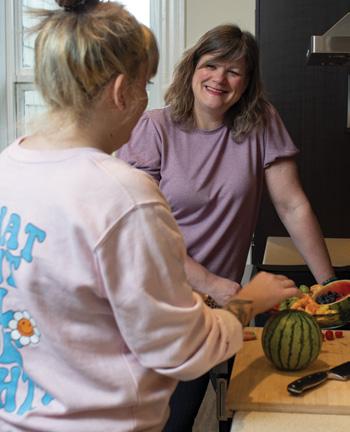
The Anawim Women’s House, a safe space for women at risk of homelessness due to poverty, fleeing violence or various health issues, uses Anawim’s Family Model approach, where everyone contributes to create a healthy and productive shared environment. The home features space for seven private rooms with semi-private bathrooms, a communal kitchen, and communal living spaces.
Dan Greco, president of the Anawim Companions Society, shared, “Early on, the Forsters provided capital injections, as well as a matching donation for operating. Their gifts pushed us over the top for the build and ensured we had money in the bank to operate for the next couple of years. They were financial catalysts, and their public support led to additional doors — and wallets — opening for our project.”
“We obtained occupancy at the end of April,” continued Greco, “and our new house director spent much of the spring getting things coordinated and making the house feel like a home for our guests. With this gift, we can do what we’re supposed to do: help people.”
Find out more about these projects at Victoriafoundation.bc.ca
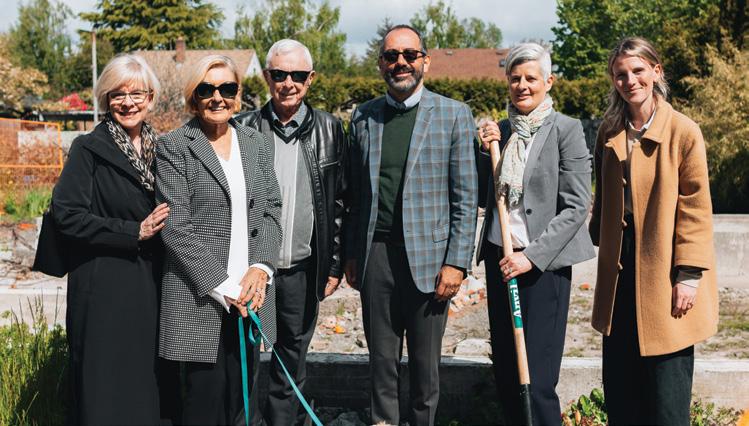
ONCE AGAIN, THE VICTORIA FOUNDATION HAS BEEN A PART OF THE GOVERNMENT OF CANADA’S $50 MILLION INVESTMENT TO DEVELOP INNOVATIVE SOLUTIONS TO CANADA’S PRESSING SOCIAL, CULTURAL, AND ENVIRONMENTAL CHALLENGES.
With support from Community Foundations of Canada and Coast Capital Savings, in 2023, the Victoria Foundation awarded $525,000 to 18 social-purpose organizations and associations to launch investment-ready projects across the Vancouver Island region. To date, the Investment Readiness Program (IRP) has brought over $1 million to the region to help social purpose organizations increase community impact.
Island organizations, including social enterprises, non-profits, charities, and co-operatives, were eligible to apply for up to $75,000 in funding to create, manage, and expand social enterprises. This program brings additional funds to our region that help organizations generate revenue for greater impact and financial sustainability, while growing the capacity for social enterprise and investment readiness.

The Cowichan Green Community (CGC) has cultivated food, community, and resilience in the Cowichan Valley since 2004. Executive Director, Judy Stafford, shared, “We’ve been running several social enterprises for quite some time. We have a landscaping business that started 14 years ago, we own our building which provides rental revenue, and we have our low-cost grocery store. We also have a farm map, two farms, and a magazine, and all of them generate revenue for us.”
The CGC is using the funds to potentially acquire a successful local business that currently uses products from CGC’s food recovery program to create value-added products to sell in the community.

The SeaChange Marine Conservation Society (SMCS) works with community groups and First Nations to map, monitor, and restore eelgrass habitat and riparian areas. Recently, SMCS acquired ShoreZone, a coastal habitat mapping service that collects and shares georeferenced imagery of North America’s Pacific coast, from Oregon to Alaska and everywhere in between. This was a unique opportunity to convert a for-profit business into a non-profit social enterprise.
Sarah Cook, newly appointed executive director for SMCS, shared their plans for the IRP funding. “I realized that our digital footprint is lacking. Our website isn’t particularly user-friendly, and we have a minimal social media presence. I’m a biologist, and this is not my area of expertise, so we proposed to hire someone to help us develop a brand and marketing strategy to communicate what we do for the community.”
Visit VictoriaFoundation.bc.ca to learn more about the Investment Readiness Program.
$448 MILLION IN ASSETS under administration including 40 new funds
8.1% INVESTMENT RETURNS ten-year annualized investment returns
$26+ MILLION IN GIFTS including bequest donations and gifts of securities
• $489 thousand unrestricted
• $11.3 million pass-through
• $3.8 million restricted term
• $10.8 million endowment
The Victoria Foundation continues to strengthen community well-being by investing in people, opportunities and solutions. As of the end of 2022, the Victoria Foundation has granted $313 million since our inception. Starting from humble beginnings with a $20 gift from Fannie Gadsden, the mother of our founder Burges Gadsden, the Foundation continues to work to create a vibrant caring community for all. Grants Distributed
GRANT DISTRIBUTIONS
All grants go to federally registered charities or other qualified donees
1,742 $25+
2022 GRANTS BY VITAL SIGNS INDICATOR AREA MILLION
• $17.6M endowed grants
• $7.7M non-endowed grants bringing our total awarded to over $313M since 1936
To ensure these endowments will be available to people and organizations throughout Victoria annually and continuously, the Victoria Foundation must strike the right balance between growth and safety. This is done by working with established global professionals with oversight from an internal investment committee.
“The 60/40 portfolio — the balanced portfolio — has been the darling of the investment industry since the 1980s,” shared Ian Johnson, Director of Investments for the Victoria Foundation, “but by 2015, interest rates were near zero — or even negative in Europe and Japan — so the bond portion of your portfolio was not providing balance anymore. Therefore, the Foundation has been working to adjust the portfolio to align with the investment landscape as it evolves and changes.”
In most cases, the timeline for investors is relatively short: a young couple saving for a down payment on a home, a parent setting something aside for a child’s education, or an older couple growing their nest egg for retirement.
At the Victoria Foundation, the investment time horizon for the endowment portfolio is long term, and requires annual granting to support the community. In fact, during periods of economic downturn, the organizations that the Foundation serves are in greater need of support, which means it’s imperative that the principal component of each endowment be professionally managed to mitigate risk, maximize returns, and create impact.
Following substantial market growth and investments over the past decade, 2022 saw more turbulence as central banks raised interest rates to fight inflation. However, thanks to proactive planning, the Foundation is still in a strong position to support the community.
Advanced strategies, such as tail risk managers, help diversify across asset classes while implementing hedging strategies to allow for better performance during bear markets.
“We brought in a high-quality mortgage manager and world-class private equity infrastructure managers to provide growth without compromising stability. We added the infrastructure component to the portfolio, earning double-digit returns last year, which helped stabilize returns in a challenging period,” explained Johnson. “We also implemented tail risk managers, which are essentially insurance for your investment, to give us the stable returns we need through prosperous times and economic slowdowns.”
The Foundation continues building for the future and working with our professional managers. More information about our investing practices is available at Victoriafoundation.bc.ca
For more detailed information, please visit our website to read ResponsibleInvesting2023 VictoriaFoundation’sApproach.
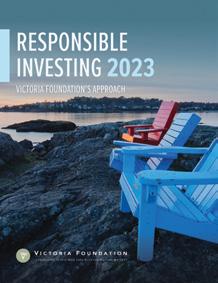
THE VICTORIA FOUNDATION CONTINUES TO BUILD IMPACT THROUGH OUR INVESTMENT PORTFOLIO, GENERATING A RETURN ON INVESTMENT SOCIALLY AND FISCALLY.
Impact investing refers to investments made into companies, organizations, and funds to develop a measurable, beneficial social or environmental impact as well as a financial return. The Victoria Foundation has allocated up to 15% of the value of the Common Trust Fund to impact investments, providing capital to address social and/or environmental issues. Currently, the impact investing portfolio sits at $12 million. While we have several impact investments in motion, here is a fund we are currently supporting.
Launched in May of 2021, the Thrive Impact Fund is a community-based loan fund investing in and providing support for impact organizations and social enterprises focused on creating positive social, environmental, or cultural benefits within Victoria and across the province. In addition to financial support, investees gain access to a community of impact organizations and entrepreneurs, with monthly connections to a community of peers and expert support to realize opportunities and mitigate challenges.
To qualify for funding, organizations need to show at least one year of earned revenue to be eligible for the financing options, which include early revenue loans, flexible term loans, and revenue-based financing, with terms from three to seven years, depending on the loan structure.
Learn more about our Impact Investing work with the Thrive Impact Fund and Thriving Non-Profits program via Scale Collaborative at VictoriaFoundation.bc.ca/pulse
ADDITIONAL ORGANIZATIONS IN VICTORIA FOUNDATION’S IMPACT INVESTMENT PORTFOLIO:
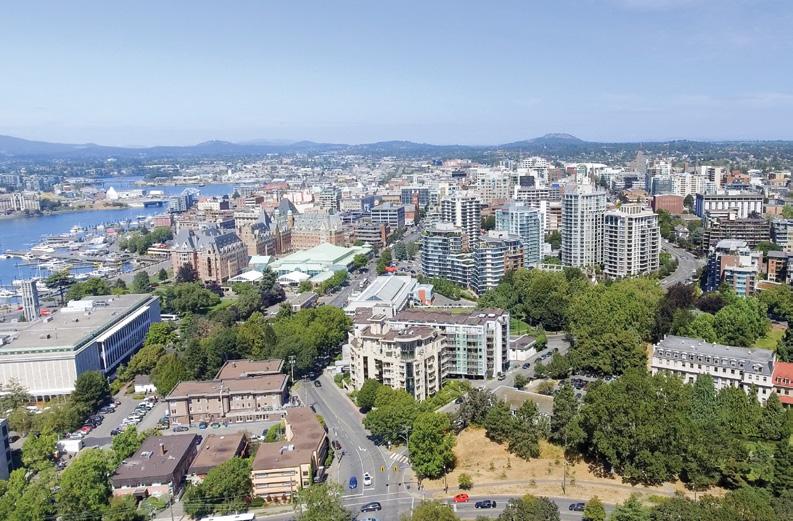
Susan Bloom (December 2021) established the Cereus Fund to support conservation, preservation and concern of, and for, the environment, the earth’s biodiversity and wildlife habitats. Susan’s trustees will act as the donor advisors to support those causes.
Anne Henderson (June 2022) was an Honorary Governor of the Foundation. Anne established the Hope Social Justice Fund which supports social justice initiatives and the Phoenix Fund which provides annual bursaries for single parents attending the University of Victoria. She also named the Foundation as a beneficiary of her Registered Retirement Income Fund.
Kathleen Bakony (June 2022) and her husband, Rob Janus, established the Kathy Bakony and Rob Janus Family Fund shortly before Kathy’s passing to ensure that causes that were important to her continue in her memory. Rob will act as the donor advisor to the fund to support bursaries at the University of Victoria and other causes they both care about.
Fiona Hyslop (July 2022) was a Victoria Circle member and an Honorary Governor of the Foundation. Fiona established the Fiona Hyslop Fund to support the causes that were dear to her heart. She also named the Victoria Foundation as the beneficiary of two life insurance policies.
Veryan Clark (July 2022) established the Yarrow Fund with her daughters, Susan and Stephanie. They will continue as the donor advisors to the fund and support the causes that are meaningful to them as a family.
Marion Cumming (August 2022) and her late husband, Bruce, were passionate about donating land to an Indigenous charity and, through her Will, she is donating her home to the Victoria Native Friendship Centre. The Chikawich Sacred Land Sustainability Fund was established to reduce the burden on the charity to help offset the costs of maintenance and upkeep of the property.
Marilyn Kan (September 2022) established the Marilyn (Leslie) Kan and John YK Kan Fund to support awards for post-secondary students who self-identify as Black, Indigenous or a Person of Colour. Marilyn also designated the Foundation as a beneficiary of her Tax-Free Savings Account.
Frances Gooday (April 2023) established the Pilgren Fund which will continue to support the BC SPCA and St. Andrew’s Cathedral. Frances was also a Victoria Circle member.
Marguerite Fraser (April 2023) and her husband, Hugh, established the Hugh and Marguerite Fraser Support Fund which supports charitable organizations that they both care about. Hugh will continue as the donor advisor.
Other donors who have generously supported us through their estate plan: Muriel Worth (December 2021) provided a cash legacy in her Will which will support the Foundation’s community grants program and, in particular, charities in our region that provide food and shelter, and address homelessness issues and support those at risk of being unhoused.
Wendy Cooke (April 2022) left the discretion to her Executor to support causes that were important to her including animal welfare, arts, human welfare, education, and sport. The Foundation will work with the Executor to ensure that Wendy’s philanthropic intentions are carried out.
Carole N. MacDonald (July 2022) was a Victoria Circle member and named the Victoria Foundation as a beneficiary of a life insurance policy and included a gift in her Will to establish the John and Carole MacDonald Legacy Fund, a designated fund to support their favourite charities in perpetuity.
Linda Allen (August 2022) provided for a cash legacy gift in her Will to support women’s transition housing. The gift was added to the Victoria Women’s Transition House Society Fund, a fund held at the Foundation which provides an annual grant to run its programs and services for women in need.
Linda Lowe (August 2022) provided a cash legacy in her Will which will support the Foundation’s strategic initiatives and other leadership and community engagement activities.
Raymond South (December 2022) named the Foundation as the residual beneficiary of his estate. The gift will allow the Foundation to proactively respond to vital issues in the community and provide ongoing support for our community grants program.
Edward Chambers (March 2023) left an unrestricted cash legacy to the Victoria Foundation in his estate which will support the Foundation’s leadership and community engagement activities and other strategic initiatives.
SUSAN BLOOM WAS AN INTENSELY PRIVATE PERSON WHOSE GENEROSITY BENEFITTED MANY IN HER SALT SPRING ISLAND COMMUNITY AND BEYOND – FROM CONSERVATION OF IMPORTANT WILDLIFE HABITAT ON THE BRITISH COLUMBIAN COAST TO THE REDWOOD FORESTS OF CALIFORNIA, ALONG WITH CONSERVANCY WORK WORLDWIDE – THE IMPACT SHE MADE WILL SPAN GENERATIONS. THE ANONYMITY OF HER DONATIONS MEANT THAT FEW FULLY KNOW THE BREADTH OF SUPPORT SHE GAVE.
Long-time friend, assistant and now trustee, Jan Theunisz, shared, “Susan was passionate about the environment, along with other things. She was a humanitarian and practiced philanthropy throughout her lifetime. She did things anonymously, locally and internationally, and believed strongly in grassroots organizing to help small groups of passionate people do extraordinary things.”
Susan was passionate about many issues, especially environmental protection. She made significant contributions to support her Salt Spring Island community, including the arts, water preservation, conservancy land acquisitions and the Lady Minto Hospital Foundation. She also donated Clayoquot Island Preserve, off the west coast, to The Nature Conservancy of Canada, where it is destined to return to its original, wild state.
While Susan may not be with us anymore, her intentions and motivations are being carried out through a donor advised fund with the Victoria Foundation. This is an option for individuals and families to engage others in their philanthropy both during and after their lifetime.
By creating a donor advised fund with the Victoria Foundation, Susan’s ability to do good extends beyond her lifetime. Mark Horne of the law firm Horne Coupar, a long-time friend, advisor, and now executor and trustee of her estate, explained, “In Susan’s case, the donor advised fund is the elegant solution. You can realize your objectives without the headaches and hassles of administering their implementation — eliminating concerns about who will be in charge of the investments while stewarding them over the long haul.” Before passing, Susan created the Cereus Fund to continue supporting the causes she believed in. Susan’s fund is named for the cereus cactus, which, much like herself, is notable for its penchant for privacy. It blooms annually for one night only, providing a glimpse of its beauty at sunset that fades before sunrise.
For many residents of our community, the natural environment is the best thing about living in Greater Victoria. Environmental Sustainability earned a B- in the 2022 Vital Signs report. victoriafoundation.bc.ca/vital-signs

While she did not become a Canadian citizen, she was certainly a Canadian in terms of her values: an honorary Canadian.
— Mark Horne, trusteeJan Theunisz & Mark Horne walking through Bloom’s property on Salt Spring Island` VICTORIA’S
